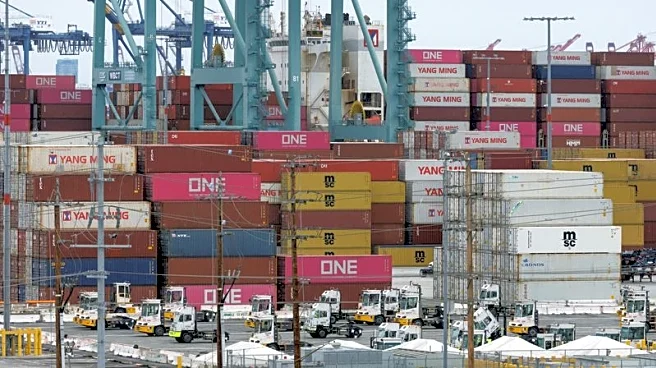What is the story about?
What's Happening?
The Global Manufacturing Purchasing Managers' Index (PMI), sponsored by J.P. Morgan and compiled by S&P Global Market Intelligence, recorded a slight dip to 50.8 in September from 50.9 in August. This indicates a modest expansion in global manufacturing, marking one of the best periods for the sector since the pandemic. Despite a rise in global production for the third time in four months, the increase in new orders was insufficient to boost staffing levels, leading to a marginal drop in employment. The report highlights regional disparities, with strong growth in India and Thailand, contrasted by sharp declines in Taiwan, Russia, Brazil, and the UK. The U.S. saw a reduced rate of output growth, while North American input prices surged, attributed to tariffs.
Why It's Important?
The PMI data is crucial for understanding global economic health, as it reflects manufacturing activity, a key economic driver. The mixed regional performance underscores the uneven recovery from the pandemic, with some areas experiencing robust growth while others face significant challenges. The U.S. tariffs have temporarily boosted domestic production and exports, but this may lead to a future slowdown as the initial effects wane. The report's insights into price pressures and employment trends provide valuable information for policymakers and businesses to navigate the current economic landscape.
What's Next?
As the effects of U.S. tariffs potentially diminish, a cooling in U.S. production and exports is anticipated. This could impact global supply chains and economic growth, particularly in regions heavily reliant on exports to the U.S. Businesses and policymakers may need to adjust strategies to mitigate these effects. Additionally, the ongoing regional disparities in manufacturing performance may prompt targeted economic policies to support struggling sectors and regions.
Beyond the Headlines
The report highlights the complex interplay between global trade policies, such as tariffs, and manufacturing performance. The potential for a 'payback' period following the initial boost from tariffs suggests a need for careful economic planning. Furthermore, the varied regional trends emphasize the importance of localized economic strategies to address specific challenges and opportunities within different markets.
AI Generated Content
Do you find this article useful?














